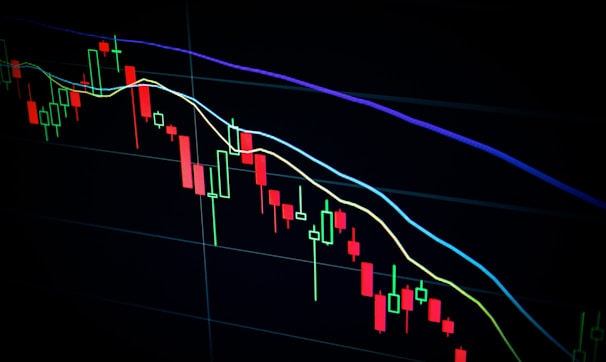Fed Warns of Sharp Asset Price Drop as Stocks Reverse Gains
FINANCE


U.S. Fed officials are now flagging “outsized asset-price declines” as a serious risk, spotlighting hedge funds, private credit, and AI-powered trading. As this warning comes, markets sharply reversed earlier gains, raising questions about valuations and the timing of future rate cuts.
U.S. Federal Reserve officials are sounding a fresh warning about financial stability, highlighting the possibility of “outsized asset-price declines” at a moment when markets were already showing signs of strain. The message landed just as stocks reversed earlier gains, turning what began as a calm trading day into a sharp risk-off shift.
The new concern centers around growing fragility in parts of the market that have swelled during the era of ultra-low interest rates — particularly hedge-fund positioning, private credit expansion, and the rapid rise of AI-powered trading strategies. These sectors, once hailed as engines of growth and innovation, are now viewed as potential transmission points for a broader financial pullback.
A Warning That Hit the Market at the Wrong Time
Federal Reserve Governor Lisa Cook emphasized that certain leveraged corners of the financial system could face pressure if economic conditions deteriorate or if volatility spikes unexpectedly. Vulnerabilities, she noted, are increasing in areas where leverage and opacity intersect — a combination that historically magnifies losses during downturns.
The timing of the warning was notable. By mid-session, U.S. equity markets had already begun losing momentum. Tech stocks led the pullback, with major indices failing to hold early gains. Analysts pointed out that investor positioning has been stretched, creating an atmosphere where even small negative catalysts hit harder than usual.
The Fed’s message only added to the tension.
Hedge Funds and Private Credit in the Spotlight
One of the Fed's clearest areas of concern involves hedge funds with large Treasury positions. These funds rely heavily on short-term financing and derivatives to amplify returns. If bond yields move sharply or liquidity dries up, these positions can unwind quickly — a dynamic that has triggered past flash crashes.
Private credit markets also drew attention. The sector has ballooned over the last decade, filling lending gaps left by banks. But unlike banks, these lenders face fewer reporting requirements, making it difficult to assess real-time risk. If the economy slows or credit conditions tighten, losses in private credit can ripple through institutions that rely on these loans for yield.
AI Trading: A New Variable in Market Stability
AI-driven trading strategies are becoming a central part of modern markets, but their growing influence introduces new questions about how they behave under stress. Algorithms trained on historical relationships may react unpredictably if market conditions break from the past.
The Fed’s warning highlighted that automated strategies can accelerate sell-offs if multiple systems respond to the same signals at once. In a market already on edge, that possibility raises the risk of sudden, amplified moves.
Stocks Reverse on Cue
By the afternoon close, U.S. markets had turned decisively lower. The S&P 500 and Nasdaq both surrendered gains and extended losses into the final hour of trading. Investors cited the Fed’s caution, mixed economic data, and uncertainty around the timing of future rate cuts as intertwined reasons for the downturn.
The reversal served as a reminder that sentiment remains fragile — and that even modest policy signals can shift markets sharply.
What This Means Going Forward
The Fed doesn’t issue warnings lightly. When officials talk about asset-price vulnerability, they’re alerting investors that conditions may be shifting beneath the surface. The combination of stretched valuations, concentrated risk, and reliance on leveraged strategies creates an environment where sudden declines become more likely.
While the Fed is careful not to predict market outcomes, the message was clear: parts of the financial system may not be as resilient as they appear.
For traders and investors, the implication is subtle but unmistakable — this is not the environment to ignore risk signals. With markets reversing quickly and policymakers flagging potential vulnerabilities, caution may prove more valuable than momentum.
